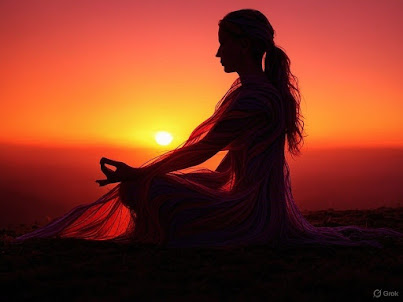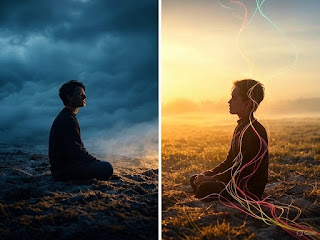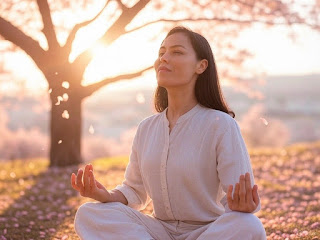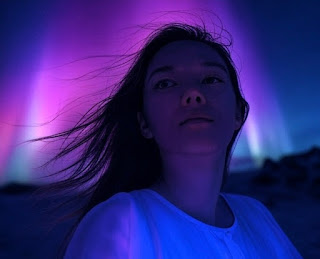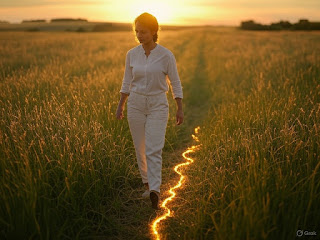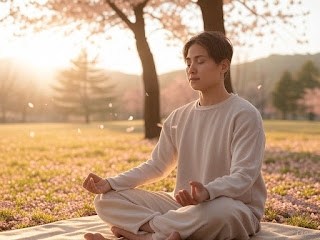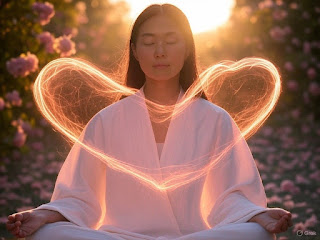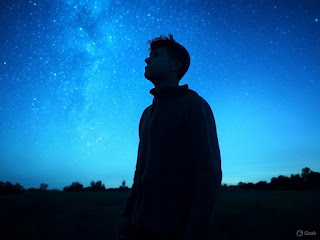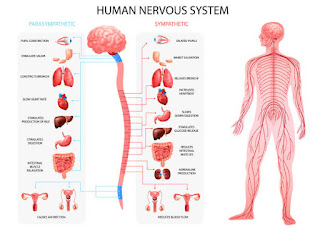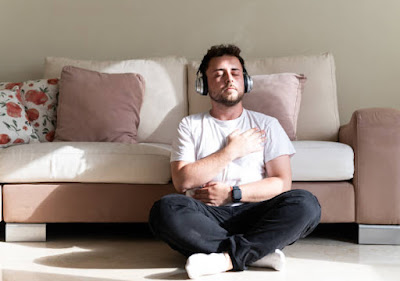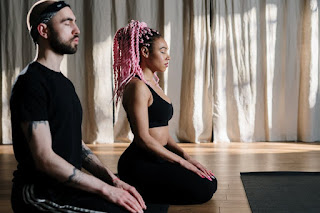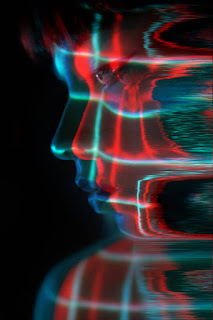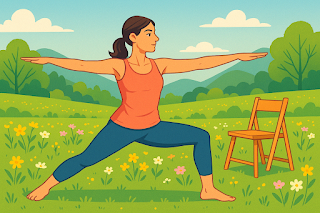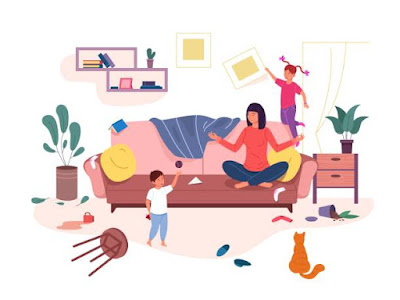How Meditation Fuels Artistic Breakthroughs
Meditation for Artistic Breakthrough: How It Fuels Creativity
Staring at a blank canvas, fingers frozen over keys, or chords that just won’t come? Every artist knows the ache of a creative breakthrough that feels out of reach. Meditation might be the spark you’ve been missing—a quiet, powerful way to ignite creativity and turn stalled moments into new ideas. This isn’t just woo-woo fluff; it’s a meditation practice that artists across the world swear by to unlock inspiration and flow.
Imagine sitting in stillness, letting mindfulness sweep away doubt, and watching your creative process bloom. Deep relaxation plays a crucial role in reducing tension and promoting mental clarity, enhancing creativity through practices like Yoga Nidra and body awareness techniques. From painters to poets, meditation fuels artistic breakthroughs by clearing the noise and inviting ideas to dance. In this guide, we’ll explore why it works, how science backs it, and a step-by-step meditation to get your creativity flowing. Ready to trade stress for inspiration? Let’s dive in.
Why Artists Struggle—and How Meditation Helps
Artists live for the thrill of creation, but the creative process can stall. Stress creeps in—deadlines loom, self-doubt whispers, and the present moment feels lost. That’s when artist blocks hit, choking new ideas before they form. Meditation steps in like a lifeline, offering inner peace to reduce stress and reboot your creative thinking.
Mindfulness meditation shifts your awareness. It quiets the inner critic that says, “This isn’t good enough,” and opens space for inspiration. A quick deep breath during a meditation session can dissolve tension, letting your body and brain relax into creative flow. Deep relaxation techniques, such as Yoga Nidra and body awareness practices, can further enhance this effect, promoting mental clarity and creativity. Artists aren’t just imagining this—science shows it works.
Think of those times you’ve crumpled a sketch or trashed a draft. Meditation practice can turn that frustration into fuel, guiding you toward artistic breakthroughs. It’s not about forcing ideas—it’s about letting them flow.
The Science Behind Mindfulness Meditation and Creativity
How does sitting still spark creative breakthroughs? It’s all in the brain. Meditation boosts alpha waves—those dreamy, relaxed states tied to creative thinking (Frontiers in Psychology, 2021). Deep relaxation techniques, such as Yoga Nidra, can amplify these effects, further enhancing creativity. This isn’t guesswork; a growing body of research shows mindfulness enhances divergent thinking, the root of new ideas and inspiration.
When you practice mindfulness, you reduce stress hormones like cortisol, which clog your creative process. A meta-analysis from 2022 found meditation improves focused attention—crucial for artists juggling vision and execution. Filmmaker David Lynch calls it his “idea catcher,” crediting meditation for breakthroughs in films like Mulholland Drive. Twenty minutes of meditation practice can shift your artist mindset from stuck to soaring.
Your mindful pause isn’t just rest—it’s a gateway to greater creativity. It rewires how you feel and think, setting the stage for artistic flow. Let’s put it into action.
Types of Meditation for Creativity
Mindfulness Meditation
What It Is: Sitting quietly, focusing on your breath or present moment, observing thoughts without judgment.
Creativity Boost: Quiets the inner critic, clears mental clutter, and opens space for new ideas to flow.
How to Try: 10 minutes daily—inhale deeply, exhale stress, let inspiration rise naturally.
Guided Visualization Meditation
What It Is: Listening to a guide (or self-guiding) to imagine vivid scenes, like painting a masterpiece or writing a song.
Creativity Boost: Activates the mind’s eye, igniting creative thinking and breakthrough ideas.
How to Try: Use a 15-minute audio imagining your art unfolding—feel the creative process come alive.
Walking Meditation
What It Is: Moving slowly, syncing breath with steps, staying fully present in your surroundings.
Creativity Boost: Stimulates ideas flow through gentle motion, perfect for artists stuck at a desk.
How to Try: Walk outdoors for 20 minutes—notice textures, sounds, let inspiration bubble up.
Mantra Meditation
What It Is: Repeating a word or phrase (e.g., “create,” “flow”) silently or aloud during meditation.
Creativity Boost: Focuses the brain, reduces anxiety, and plants seeds for creative thoughts.
How to Try: Sit for 10 minutes, chant “inspire” on each exhale—feel inner peace spark art.
Loving-Kindness Meditation (Metta)
What It Is: Sending compassion to yourself and others through phrases like “May I be creative.”
Creativity Boost: Softens self-doubt, fostering a mindful heart open to greater creativity.
How to Try: 15 minutes—start with yourself, expand outward, watch creative flow grow.
Open Monitoring Meditation
What It Is: Observing all sensations, thoughts, and emotions without attachment, staying aware.
Creativity Boost: Enhances focused attention and divergent thinking, key for artistic breakthroughs.
How to Try: Sit for 15 minutes—let your mindful lens widen, capture creative thoughts as they pass.
A Meditation Practice for Artistic Breakthroughs
This meditation practice is your artist’s toolkit—simple, powerful, and built for creative breakthroughs. It takes 10–15 minutes, blending mindfulness with inspiration to unlock your creative flow. Incorporating deep relaxation techniques can further enhance the effectiveness of the meditation practice. Grab a quiet spot, and let’s begin.
Step 1 – Quiet the Inner Critic
Sit in a comfortable position—chair, floor, wherever your body feels at ease. Close your eyes and take five deep breaths. Inhale slowly, exhale fully—feel your breath anchor you to the present moment. Deep relaxation techniques can help further calm the mind and reduce mental tension, making it easier to quiet the inner critic. Notice thoughts arise—“I’m not good enough,” “This won’t work”—and let them drift like clouds.
This mindfulness meditation isn’t about silencing your mind; it’s about awareness. The critic fades as you observe without judgment. Stay here for a minute, finding inner peace to clear the slate for creativity.
Step 2 – Tap Into Creative Process
Now, invite your art into focus. Picture your creative process—brush on canvas, words on page, notes in air. See it in your mindful eye: colors swirling, rhythms pulsing. Deep relaxation can help create a state of mental clarity and openness, making it easier to tap into creative flow. Don’t force it—let ideas flow naturally, as if you’re fully present in the act of making.
Feel the inspiration build. This meditative state is where artistic flow lives—where new ideas spark without effort. Spend a few minutes here, soaking in the creative thoughts that rise. You’re not just imagining—you’re igniting.
Step 3 – Invite the Breakthrough
Ask yourself: “What’s the next creative breakthrough I need?” Maybe it’s a bold stroke, a plot twist, a melody. Hold the question lightly—trust your awareness to answer. Deep relaxation can help create the mental space needed for new ideas to emerge. A new idea might flicker; a sense of direction might bloom. This is mindfulness at work, guiding inspiration.
Don’t rush. Let the present moment reveal what’s been hiding. When it lands—a shape, a phrase, a sound—feel it settle in your body. This is your artistic breakthrough, ready to unfold.
Step 4 – Ground and Create
Take one last deep breath. Exhale stress, inhale peace. Deep relaxation can help maintain the calm and focused state achieved during meditation, making it easier to transition into the creative process. Open your eyes, carrying this meditative state into your world. Pick up your brush, pen, or instrument—start creating now, while the creative flow hums. Your focus is sharp, your mindful energy alive.
This step bridges meditation and action. Don’t wait—let your breakthrough ideas spill out. The present is your canvas—paint it.
Tips for Artists
Deepen this meditation practice with these: • Play soft music to ease into inner peace.
• Journal your creative thoughts post-session—track new ideas.
• Try walking meditation outdoors to stir inspiration.
• Practice daily—consistency fuels creative breakthroughs.
• Incorporate deep relaxation techniques, such as Yoga Nidra, to enhance mental clarity and creativity.
These habits keep mindfulness alive in your everyday life, amplifying creativity.
Cultivating Mindfulness in Daily Life
Mindfulness isn’t confined to meditation sessions; it can be woven into the fabric of your daily life, enhancing creativity and well-being.
Mindfulness Meditation: Start with a simple practice of paying attention to your breath, body, or emotions. This foundational practice helps anchor you in the present moment, fostering a calm and creative mind.
Mindful Movement: Activities like yoga or tai chi involve paying attention to your body and breath while moving. These practices can help you stay present and connected, enhancing your creative flow.
Sensory Awareness: Engage your senses by noticing the sensation of your feet on the ground or the sounds of nature. This heightened awareness can spark new ideas and insights.
Mindful Daily Activities: Everyday tasks like eating, showering, or driving can be done mindfully. By focusing on the sensations and experiences of the present moment, you can transform routine activities into opportunities for inspiration.
Consistency: Incorporate mindfulness into your daily routines and activities. The more you practice, the more natural it becomes, and the greater the impact on your creativity and overall well-being.
By practicing mindfulness in such a way, you can reduce stress, enhance your creative thinking, and improve your quality of life. It’s a simple yet powerful tool that can be practiced anywhere, at any time.
The Role of Self-Awareness in Creativity
Self-awareness is a cornerstone of creativity, providing a clear understanding of your thoughts, feelings, and behaviors.
Understanding Strengths and Weaknesses: Self-awareness involves recognizing your creative strengths and areas for improvement. This insight allows you to develop strategies to enhance your creative abilities.
Identifying Creative Blocks: Being aware of your creative blocks is the first step in overcoming them. Self-awareness helps you recognize these obstacles and find ways to navigate through them.
Mindfulness and Self-Awareness: Practicing mindfulness enhances self-awareness by keeping you grounded in the present moment. This heightened awareness can lead to greater creative expression and innovation.
Purpose and Direction: Self-awareness helps you understand your values and motivations, providing a sense of purpose and direction in your creative endeavors.
Confidence and Self-Trust: Knowing yourself better builds confidence and self-trust, essential for taking risks and pursuing creative projects.
By cultivating self-awareness, you can unlock your full creative potential and navigate your artistic journey with greater clarity and confidence.
Real Artists, Real Breakthroughs
Artists world-wide lean on meditation for inspiration. David Lynch meditates twice daily, birthing surreal masterpieces. Deep relaxation techniques play a crucial role in his meditation practice, helping to reduce tension and enhance creativity. Writer Natalie Goldberg uses mindfulness practice to shed light on her novels’ next turns. Musician Paul McCartney credits stillness for melodies that shaped a whole world of sound.
Their secret? Meditation creates space for creative breakthroughs. It’s not magic—it’s awareness meeting ideas. Your creative process can do the same. What new ideas will meditation unlock for you?
Mindfulness Quotes for Inspiration
Sometimes, a few words of wisdom can ignite your creative spark. Here are some mindfulness quotes to inspire your artistic journey:
“The present moment is the only moment available to us, and it is the door to all moments.” – Thich Nhat Hanh
“Mindfulness is the practice of being fully present and engaged in the current moment, while cultivating a non-judgmental awareness of one’s thoughts, feelings, and bodily sensations.” – Jon Kabat-Zinn
“The mind is everything; what you think, you become.” – Buddha
“Creativity is the ability to introduce order into chaos.” – Eric Hoffer
“The best way to get good ideas is to get a lot of ideas.” – Linus Pauling
“The creative process is a process of surrender, not control.” – Julia Cameron
Let these quotes remind you of the power of mindfulness and the endless possibilities it brings to your creative process. Stay fully present, and let your creativity soar.
Bringing Meditation Into Your Artistic Life
Making meditation a regular practice transforms your art. Start small—10 minutes before a session. Incorporate deep relaxation techniques to enhance the effectiveness of your meditation practice and boost creativity. Busy schedules? Sneak a deep breath between strokes. Over time, mindfulness becomes your creative ally, easing anxiety and boosting well-being.
This isn’t just for breakthroughs—it’s for life. Reduce stress, sharpen focus, and let ideas flow. Your world shifts when you’re aware and present. Try it today—see what creative thinking emerges.
Conclusion
Meditation for artistic breakthroughs isn’t a trend—it’s a tool. It reduces stress, sparks new ideas, and fuels creative breakthroughs by rooting you in the present moment. Deep relaxation techniques play a crucial role in this process, enhancing mental clarity and creativity. From quieting your brain to igniting your creative flow, this meditation practice is an artist’s key to inspiration. You don’t need hours—just minutes of mindfulness can shift everything.
Pick up this practice now. Meditate, create, and watch your art soar.
